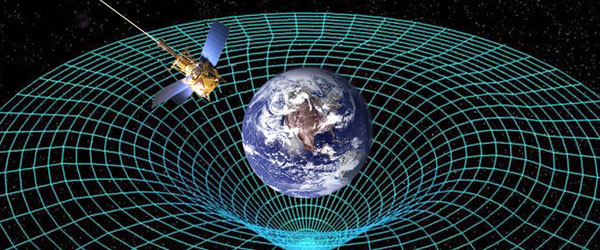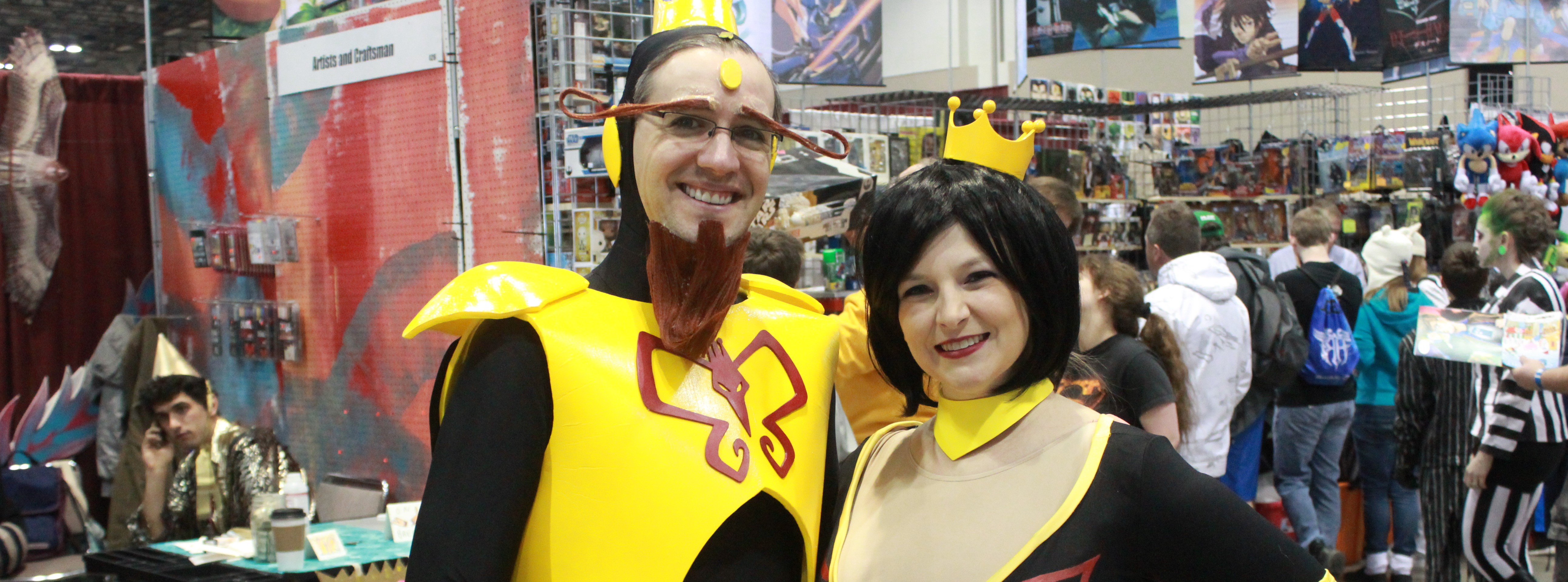Gravity 101 – What If?
After the article where I covered tides (here), I was asked a couple of intriguing questions that readers will also find interesting.
What if we had two moons?
This is a deeper question than you might realize. To fully understand the tidal effects of two moons, we first have to understand how two objects orbit around a third. This brings us to what is known as the Three Body Problem. This is quite old, having been first discussed in published materials in the 1740s. In 1887, Ernst Bruns and Henri Poincaré proved that, in general, there is no analytic solution to this problem. What that means is that, given any three objects with specified initial positions and velocities (called initial conditions), there is no general way to write down a set of equations using common functions that absolutely describe the position and speed of all three objects at any given time. I say “generally” because there are special cases that can be solved. But that doesn’t mean that we are dead in the water. We can determine relationships between the rates of change of parameters; velocity is the rate of change of the position; acceleration is the rate of change of the velocity. These relationships are called differential equations, and there a slew of techniques to approximate them – these are called numerical solutions.
You might say that we’ve already covered this three body issue. We’ve talked about a space ship and a space station orbiting the Earth; you can even consider that a satellite orbiting the Earth that orbits the Sun is also a three body system. Well, yes, but these fall into the special category. The Earth/Sun/satellite system is special because the mass of the satellite is insignificant compared the Earth and the Sun, the satellite is closest to the Earth so we can ignore the Sun. The Sun may be huge, but it’s also very far away. We can also ignore the Sun in the Earth/space station/space ship system, so what makes it special? In this case we can ignore the gravitational force between the station and the space ship; it is very small. Even with a satellite as large as the Moon, the Sun has little effect on the Moon’s orbit around the Earth. But now we want to consider a system where the gravitation effects of three bodies all have some significant impact on each other.
One thing to note is that the Earth – Moon system is quite unique, especially in our solar system, because of the large size of our Moon. It is about 1/80th the mass of the Earth. It is the combination of the Moon’s mass and its fairly close proximity to Earth that give us our oceanic tides. If it were much smaller or much further away, then the tides would be much smaller or even nonexistent. What I’m getting at is that, for a second moon to create tides, it needs to have significant mass and be close enough to the Earth. Suppose we want the second body to have the same tidal effects on the Earth as does the Moon, so it would have to have the same gravitational pull on the Earth as the Moon. If it is going to be closer, say half the distance to the Moon, then our second moon will need to have a mass that is one-fourth that of the Moon (remember that gravitational forces vary by the square of the distance). Now I could choose from a wide variety of other conditions that would impart either more or less tidal pull on the Earth, but for simplicity, let’s choose this one. For the rest of this article, when I write “Moon” with a capital “M”, I mean our current moon, small “m” means the other moon.
Now, we need to recall back to the first article in this series (here) and remember that the square of the orbital period is proportional to the cube of the distance. This means that the ratio of these two quantities is the same for either moon, The orbital period of the Moon is roughly 27 days, and the distance from the Earth to the Moon, let’s just call it d (trust me. we won’t actually need the number). If we call the orbital period of the second moon T then we have (warning, scary Algebra steps ahead):
$latex \displaystyle \frac{T^2}{\left(\frac{d}{2}\right)^3} = \displaystyle \frac{(27)^2}{d^3}.$
Or
$latex \displaystyle \frac{8T^2}{d^3} = \displaystyle \frac{(27)^2}{d^3}.$
Now divide by 8 and multiply by $latex d^3$ (I told you we didn’t need to know d)
$latex T^2 = \displaystyle \frac {(27)^2}{8}.$
Now take the square root (I bet you were wondering why I didn’t square 27)
$latex T = \displaystyle \frac{27}{\sqrt{8}} \approx 9.5 , days.$
The “month” for our moon will be about a third of the month for our Moon.
With that covered, we need to think back to the previous article and note that we can think of the tides caused by a single moon as two waves, one on either side of the Earth that follow the moon in its orbital path. This is a bit of an over-simplification, because the Earth’s continents get in the way, but it makes it much easier to think about. Keep in mind that there are not just the two high points directly below and directly opposite of the Moon, but there are low points ninety degrees from the bulges.
With two moons, we will have two sets of these waves traveling around the planet at different speeds. The key thing to understand about waves is that their effects are additive. I deliberately set up the two moons to have about the same individual tidal pull to make this part easier to think about. When the two bulges come together, they add together to make a bulge twice as high. When two low points come together, the result is twice as low. When a bulge and a low point come together, they cancel each other out.
You can see that the end result is that we would have very dramatic high and low tides when the two moons are on the same or opposite sides of the Earth. When the moons are not in alignment, then there will be less dramatic tides because of the cancellation. Keep in mind that the inner moon orbits a little more than three times in the time that it takes our Moon to orbit once. The means that these super tides occur three times every month at varying locations around the Earth – living close to the shoreline is definitely a bad idea.
Oh wait, I forgot to mention an important fact. The increased tidal effects won’t only act on the ocean waters, they pull and push on dirt and rocks as well. Doubling the Moon’s tidal pull on the Earth’s crust will be enough to increase volcanic and seismic activity as well – more volcano eruptions and more earthquakes.
The good news, I suppose, is that this system is not stable. I mentioned earlier that it has been proven that there is no general solution to the three body problem. The primary reason for the lack of a general solution is due to the orbital perturbations that occur when at least two of the bodies are close to each other. In our case, when the two moons are on the same side of the Earth, the heavier Moon will pull the smaller moon to a higher, slower orbit. Eventually the two moons will collide, or possibly the smaller moon will be ejected from Earth’s orbit. If you’re a fan of science fiction then you might be aware of this concept where one object, perhaps a space ship, swings close to a much larger object to get a sling shot effect vastly increasing its velocity. I ran some simulations and saw both outcomes.
What if the Moon was blown up?
Well let’s go the other way, we have our beloved Moon and it is somehow destroyed, perhaps by an extreme thermonuclear detonation. Let me just say that this is going to be bad, very bad. The first major effect will be the amount of material that will rain down onto the Earth. It’s almost impossible to pin any exact numbers on this, because we have to make a stab at how much of the Moon will hit the Earth and how big the pieces will be. Like everything I do, let’s try and simplify things to give us a general idea of what might happen. Suppose that some mad scientist drills down to the center of the Moon and deploys a super-nuke capable of destroying the Moon. I put it in the center because then roughly half of the Moon’s mass will eventually hit the Earth.
Considering that the meteor that wiped out the dinosaurs was estimated to be about 10 kilometers in diameter (a little over 6 miles), I think that there’s not going to be too much to talk about here. The Moon’s diameter is a bit over 2000 miles, so unless this is a really, really, really, big explosion, there are going to be chunks much bigger than 6 miles across raining down – game over.
Let’s take a different approach, one where most of life on earth is not immediately wiped out. Back in the 70s, there was a SciFi television series called Space: 1999, where a massive explosion on the Moon throws it out of Earth’s orbit into deep space. The series focused on the plight of the people trapped on Moonbase Alpha, but what about Earth? Though not as immediately devastating as the Moon blowing up, this is still going to be a bad situation. Other than providing light at night, our Moon has more impact on life on life than you may realize.
Now I’m not a Marine Biologist, but I was able to scrape together a little information to make some suppositions. First is the loss of the tides. The periodic motion of the ocean waters provides mixing of nutrients and oxygen into the ocean waters. This mixing and oxygenation drives the ocean life near the shore line; the loss of the tides will mean a rapid decline of sea life in that region. The reefs will most likely be the the first to go, as they rely of the flow of nutrients. Reefs are habitat for a wide variety of fish and plant life; the reef dies, they die too.
So we’ve lost the reefs, some fish, and some plants, but the shoreline accounts for a very small percentage of the total volume of the ocean, so we’re still good, right? I think not. The abundance of life along the shoreline assists in the propagation of life for the entire ocean – it is the zone of the most rapid growth. The shoreline life effects on deep ocean life occur across a longer time span, so it will take quite some time for deep ocean life to be fully impacted, but it will happen. My guess, Shark Week is going to really suck after a few years. Don’t get me wrong though, I don’t believe that this would be the end of all sea life. As has occurred several times in Earth’s history, life generally finds a way to carry on, though it will just be very different.
That’s just the ocean, what about other life? I believe that humans are the most removed from the lunar cycles ever since the discovery of fire giving us the ability to bathe ourselves in light on the darkest, moonless nights. Just about all life on the Earth is tied in some way to the lunar cycles – the edge cases are those that live within the arctic circles. Without the Moon, all life on Earth will be impacted.
So what have we learned:
- We need our Moon, don’t mess with it!




